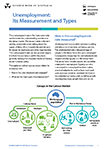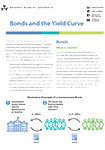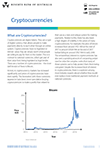The Nature of the Economy
This module contains a collection of resources for teachers to introduce students to the Australian economy and its participants, the circular flow model, and the business cycle. The resources support a number of Economics and Commerce curriculum objectives.
Delivery Notes
The Nature of the Economy

Guidance notes for teachers containing background information, and a summary of available resources and how they could be used within a classroom setting to deliver this topic.
Download 186KB
Performance of the Australian Economy

Guidance notes for teachers containing background information, and a summary of available resources and how they could be used within a classroom setting to deliver this topic.
Download 174KB
Illustrators
Types of Unemployment

Summary of the different types of unemployment within the labour market.
Download 83KB
Groups in the Labour Market

Diagram showing the different groups of people within the labour market.
Download 58KB
Monetary Policy and COVID-19

Infographic outlining the monetary policy measures implemented by the Reserve Bank in response to the economic effects of COVID-19.
Download 51KB
The Circular Flow Model

Diagram showing and describing the five-sector circular flow model of the economy
Download 102KB
The Business Cycle

Diagram showing the business cycle and features of economic expansion and contraction
Download 106KB
Presentations
Monetary Policy and Current Economic Conditions

This presentation summarises the monetary policy framework and current economic conditions in Australia. It is updated once each quarter, following the release of the Statement of Monetary Policy.
Download 627KB
Roles and Functions

This presentation summarises the roles and functions of Australia's central bank.
Download 1.5MB
A Case Study of Monetary Policy Implementation on 3 August 2016

This presentation explains how the Reserve Bank implements monetary policy using a case study of what happened on a day when the Reserve Bank changed the cash rate.
A Case Study of Liquidity Management on 3 August 2016

This presentation explains how the Reserve Bank manages liquidity using a case study of what happened on a day when the Reserve Bank changed the cash rate.
What is the Economy?

This presentation contains key information introducing students to the economy, circular flow model, and interdependence of the different sectors.
Download 662KB
The Business Cycle

This presentation contains key information introducing students to the business cycle, inflation, interest rates and the role of the Reserve Bank.
Download 692KB
Performance of the Australian Economy

This presentation covers some key economic indicators, and how these can help to assess the performance of the Australian economy, as well as introducing students to macro and micro tools to influence the economy's performance.
Download 868KB
Learning Activities
Reading and Interpreting Charts

Provides questions and activities linked to the Reading and Interpreting Charts video.
Download 859KB
The Future of Work

Provides comprehension questions linked to the Future of Work video.
Download 45KB
Opening the Vault

Guides students through how to find the information they need on the RBA website.
Download 146KB
Unpacking Publications

Helps students familiarise themselves with RBA publications and provides some tips to make the most of the information provided.
Download 134KB
Key Economic Indicators – Unpacking the Snapshot

Helps students to apply skills to summarise and explain key economic statistics and trends.
Download 195KB
The Transmission Mechanism

Helps students understand how a change in monetary policy flows through to the rest of the economy.
Download 148KB
Exploring Inflation

Work through this Activity to investigate interesting examples of inflation developments and trends.
Download 138KB
You Make the Decision – the Cash Rate

Helps students identify key economic indicators and how recent movements in these indicators could influence the cash rate decision.
Download 126KB
Perspectives on RBA decisions

Helps students to consider how decisions made by the RBA might affect different people in the economy.
Download 135KB
Building Charts Using RBA Statistical Tables

Helps students to gain confidence building Excel charts from data available on the RBA website.
Download 462KB
Sectors in the Economy

Helps students understand the five sectors of the circular flow model
Download 109KB
Complete the Circular Flow Model

Provides an outline of the circular flow model for students to label
Download 101KB
Injections and Leakages

Helps students identify different economic activity as injections or leakages
Download 144KB
Business Cycle Case Studies

Help students consider how different people might be affected by the business cycle
Download 107KB
Analysing Australia's Economic Performance

Helps students explore economic growth (GDP growth), unemployment rate, inflation and the cash rate
Download 138KB
Comparing the Australian and Indian Economies

Helps students compare charts on GDP growth for Australia and India
Download 113KB
Explainers
What is Monetary Policy?
Explains what monetary policy is, what it aims to achieve and how monetary policy decisions are both made and implemented.
The Transmission of Monetary Policy
Describes how changes made by the Reserve Bank to its monetary policy settings flow through to economic activity and inflation.
How the Reserve Bank Implements
Monetary Policy
Describes the Australian cash market and explains how the Reserve Bank ensures that the cash rate is as close as possible to its target.
Unconventional Monetary Policy
Describes the different tools used by central banks (including the Reserve Bank of Australia) when conducting unconventional monetary policy.
Causes of Inflation
Describes what inflation is and the main causes of changes in the inflation rate.
Australia's Inflation Target
Describes the inflation target, why the Reserve Bank targets inflation and how the target works.
Inflation and its Measurement
Describes how inflation is measured, explains how different indicators of underlying inflation are calculated, and outlines some of the limitations of using the Consumer Price Index.
Economic Growth
Explains what economic growth is, how it is measured and explores the concepts of aggregate demand and supply.
Recession
Describes the nature of the business cycle, different approaches to identifying a recession and some of the recessions that have occurred in Australia.
Productivity
Explains what productivity is, how it is measured, its drivers and the benefits of productivity growth.
Unemployment: Its Measurement and Types
Explains how the unemployment rate is measured and describes the main types of unemployment.
The NAIRU – Non-Accelerating Inflation Rate of...
Explains what the NAIRU is, why it is important and what determines its level.
Drivers of the Australian Dollar Exchange Rate
Explains the factors that drive changes in the Australian dollar exchange rate over time.
Exchange Rates and the Australian Economy
Explains how changes in the value of the Australian dollar affect economic activity and inflation in Australia, along with the nation's balance of payments.
Exchange Rates and their Measurement
Explains the concept of an exchange rate, how exchange rates can be measured and the different types of exchange rate regimes that exist.
The Balance of Payments
Examines the structure of Australia's balance of payments, describes the relationship between its accounts and explains the accounting framework.
Trends in Australia's Balance of Payments
Describes the longer-term trends within the two sides of Australia’s balance of payments: the current account and the combined capital and financial account.
Bonds and the Yield Curve
Explains what a bond is, how the yield curve is formed from a series of bond yields and why the yield curve is important.
Banks' Funding Costs and Lending Rates
Explains what banks' funding costs and lending rates are and what influences them.
Australia and the Global Economy – Terms of Trade...
Discusses the causes of the terms of trade boom of 2005 to 2012 and explains the way in which it affected the Australian economy.
The Global Financial Crisis
Summarises the main causes of the global financial crisis, how the crisis unfolded and how policymakers responded to it in Australia and abroad.
What is Money?
Explains the features of money and the unique functions that money performs in an economy.
Digital Currencies
Explains what digital currencies are, including cryptocurrencies and Central Bank Digital Currencies, and discusses some of the public policy implications.
Origins of the Reserve Bank of Australia
Traces the origins of the Reserve Bank to creation of the Commonwealth Bank of Australia in 1911, and outlines the growth in central banking responsibilities.
Digital Interactives
Inflation Explorer

The Inflation Explorer is an interactive tool that lets the user explore how prices of individual goods and services, and overall inflation, have changed over time.
Snapshot Comparison

This interactive tool allows you to compare snapshots of the economy at different points in time.
























